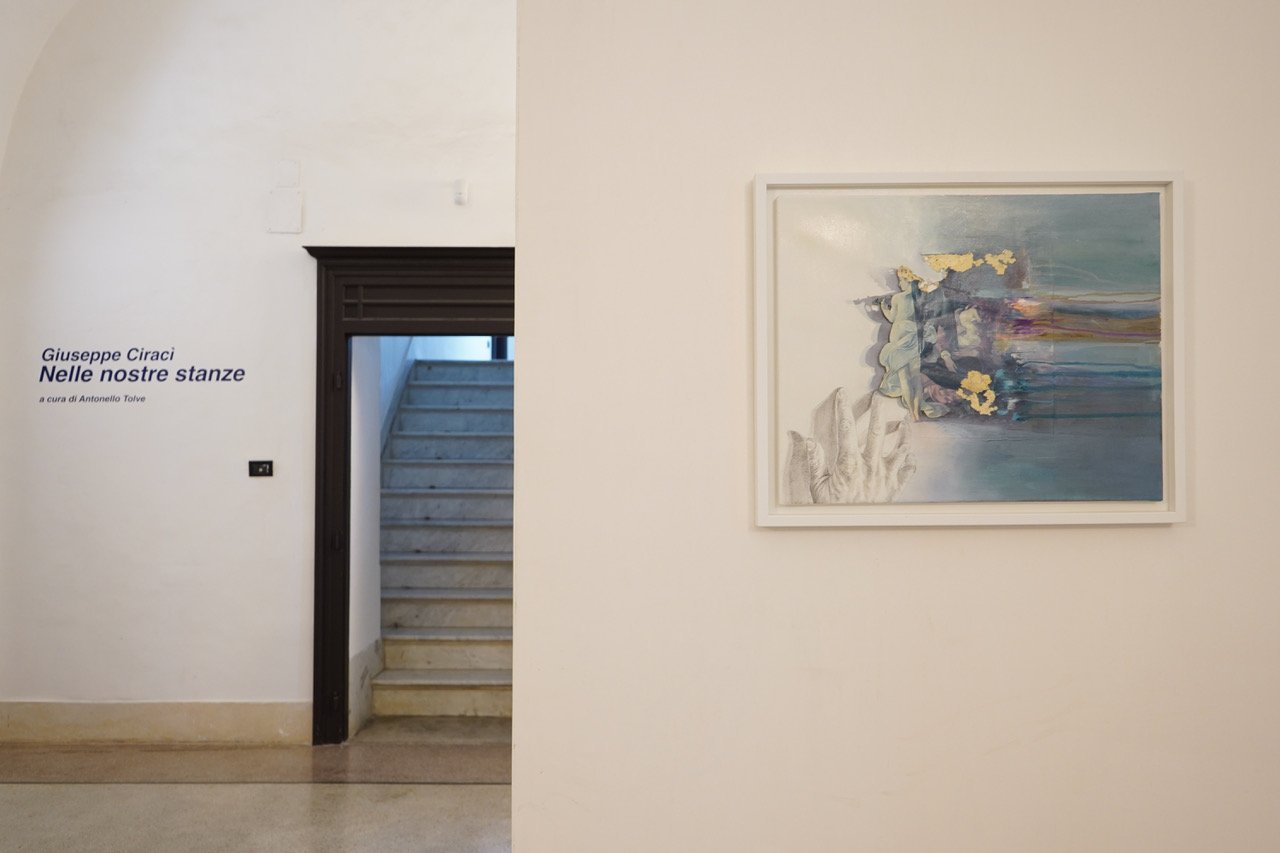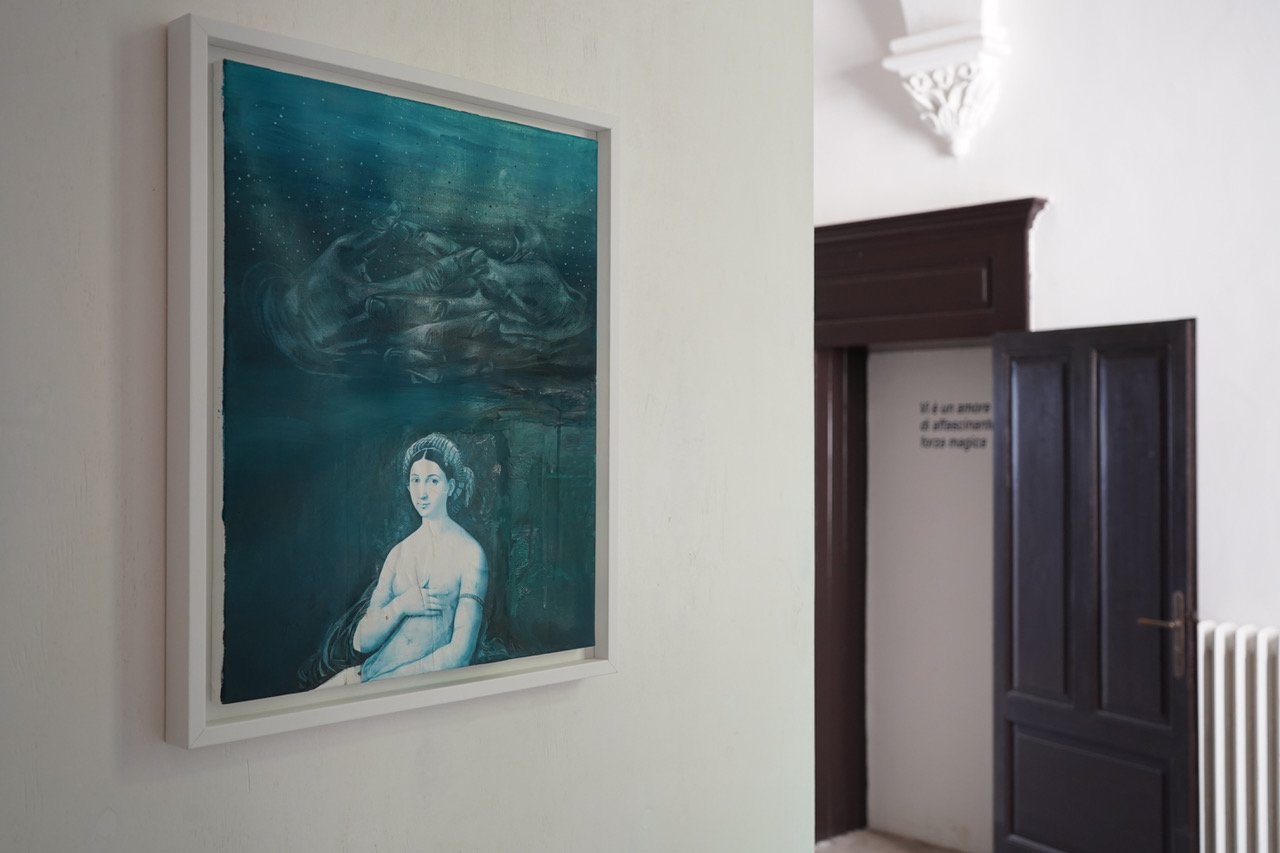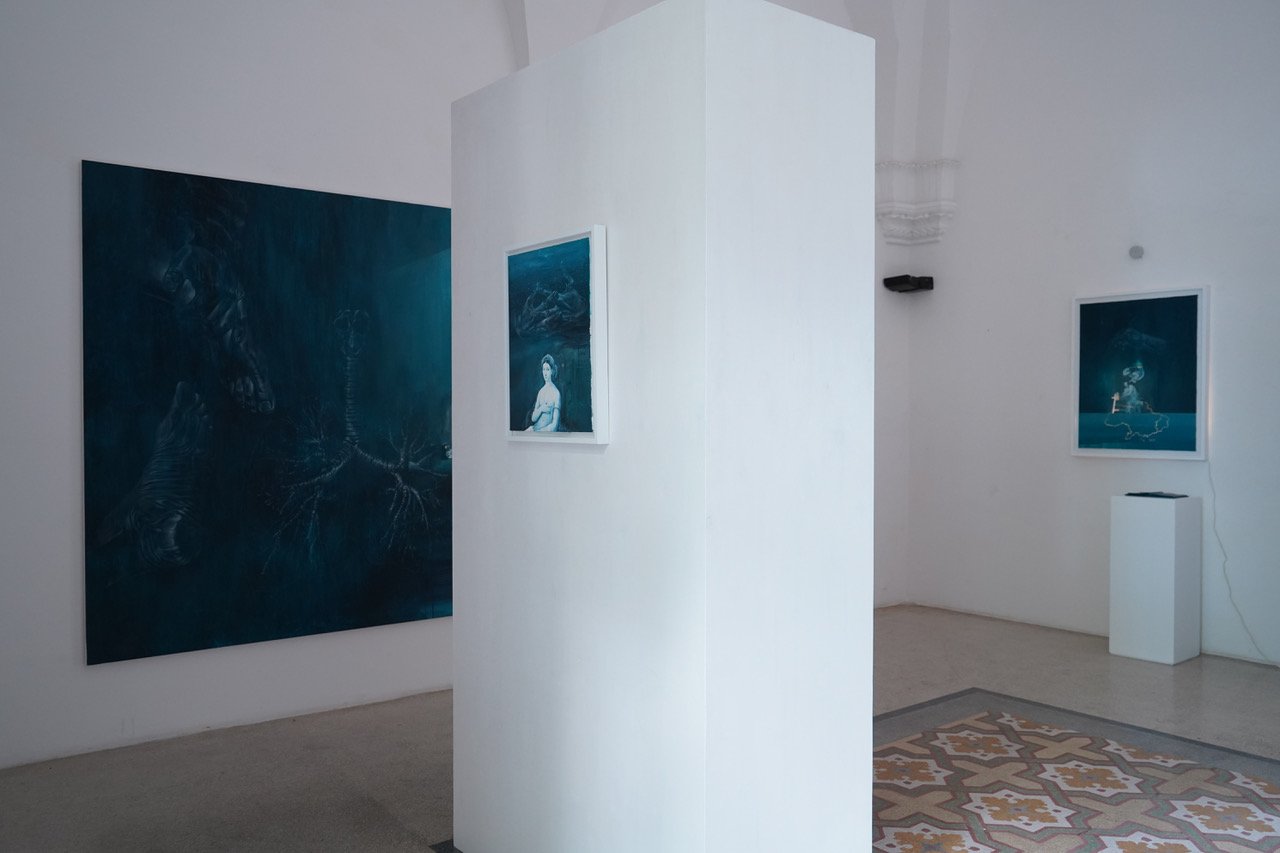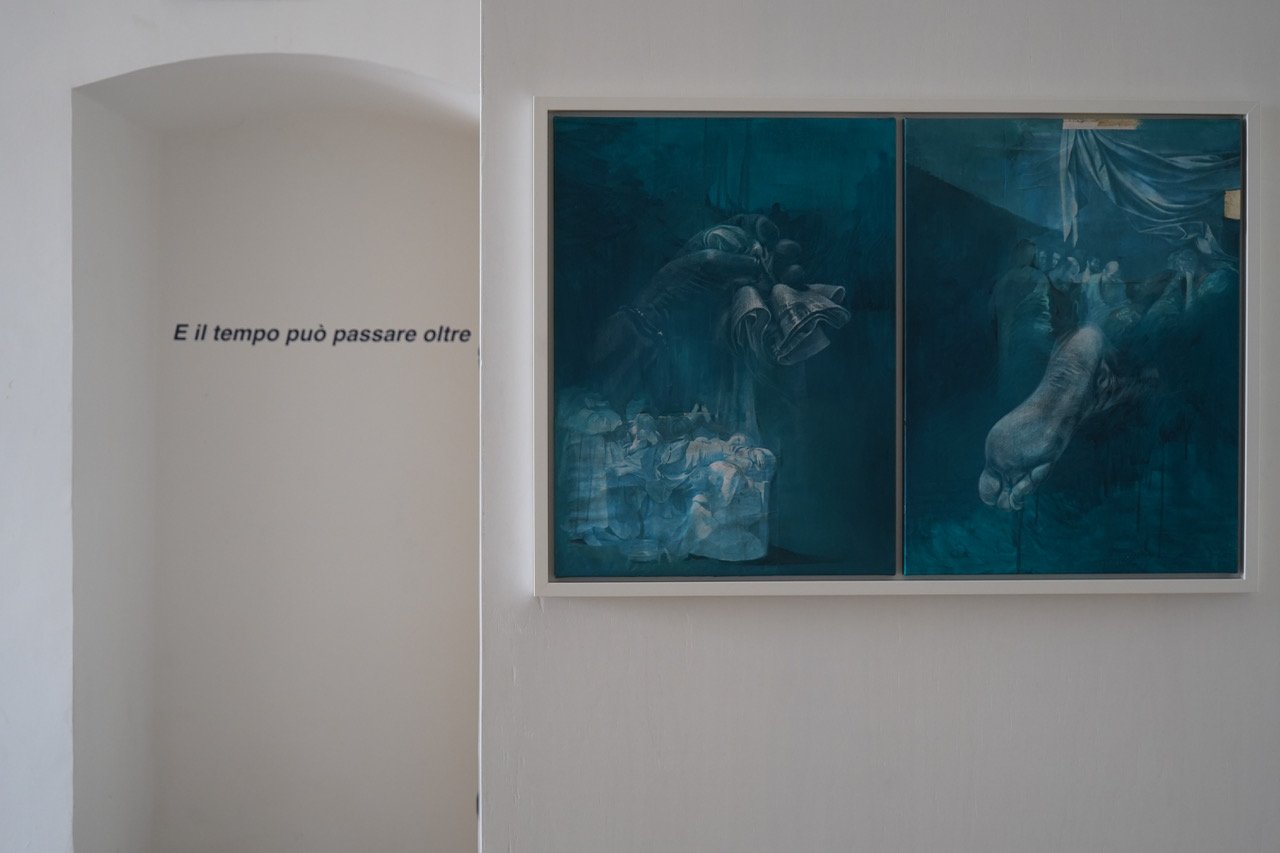Curated by Antonello Tolve – Castello Dentice di Frasso, Carovigno (BR)
3 July | 6 October 2024 Opening: 3 July, 7.00 p.m.
The exhibition Nelle nostre stanze by Giuseppe Ciracì will be inaugurated on Wednesday 3rd July at 7 pm, at the Dentice di Frasso Castle in Carovigno. It is promoted by Le Colonne Association and PAST Puglia, in collaboration with Kyro Art Gallery of Pietrasanta and sponsored by Apulia Region, Province of Brindisi and Municipality of Carovigno.
The inauguration will be attended by the president of Le Colonne Association, Anna Cinti, the mayor of Carovigno Massimo Lanzillotti, the regional councillor Alessandro Leoci and the exhibition curator Antonello Tolve.
The exhibition will be hosted inside the castle until October 6th, enhancing the visit of the manor, already guardian of a rich millenary history, during the summer period.
Conceived for the rooms of the Castello Dentice di Frasso or more precisely, for the more intimate living spaces on the first floor, the ‘empty containers of memories’ of ‘experiences and dramas and also’ rooms that hold ‘great loves such as that between Count Alfredo Dentice di Frasso and Elisabetta Schlippenbach’
In our rooms is a story divided into five stages, in five communicating rooms spaced out on two specific levels, where Ciracì narrates, through small, medium and large works some of which were especially created for the occasion, the many stories that mingle with one another and, at the same time, revolve around the dominating story of Alfredo and his beloved consort Elisabetta (for her a second marriage – ‘but then he arrived with a warm with a loving heart and with a river of happiness’ the last heirs and inhabitants of a place – the abode of love – that ‘with great sensitivity and acumen they cared for together’ from 1905, transforming it into a homely environment.
The space is physical and metaphorical, each room used by the artist is now a place to linger, a place traversed and marked by indelible memories (the day after Elisabetta’s death, Alfredo jotted down a bitter sentence which Ciracì took as the title of the exhibition – ‘it’s atrocious, I have to move about our rooms, in her garden where everything is she who is no longer here and who will never come back’), but it is also a garden of utopia where one can experience the magic of each heterotopia. It is a room with thresholds that delimit and appear as inevitable transit zones, passages that unite the before and the after, boundaries that separate and connect different psychic places. Moving with ease between drawing, painting and the artist’s book (the latter understood as an object of knowledge or as a compact cultural body), Ciracì always reveals an incisive gaze, determined by a somewhat meditated investigation capable of grasping the legacy of artists such as Leonardo, Raffaello or Caravaggio, to then re-propose it – apply it – in unexpected ways yet linked to direct hold on reality, to familiar lexicons, to private and subjective pathways. He treats every surface, either stretched canvas, paper or card, as an analytical testing ground where we not only sense the idea of inhabiting time from different latitudes, but also of adapting (even adopting) fragments of stories and weaving them together to create refined and gentle fantasies of drawing closer, and dreams that cannot see us, let alone dream of us.
Giuseppe Ciracì (Brindisi, 1975) graduated from the Liceo Artistico Edgardo Simone in Brindisi and continued his studies in painting at the Academy of Fine Arts in Lecce. He began his professional career in Apulia before moving to Milan in 2003, where he developed his research in figurative painting, engaging in an original reinterpretation of ancient and modern art history. In 2007, he collaborated with his paintings on the documentary film Sigmund Freud, The Great Thinker directed by Ferruccio Valerio. He focused his entire production on the theme of the portrait, before moving on to the polymeric series inspired by Leonardo da Vinci’s Windsor sheets (2011-2014).
In 2015, he was selected by critic Alberto Dambruoso to participate in the BoCs Art Residency in Cosenza. He has taken part in numerous group and solo exhibitions in Italy and abroad and has been a finalist in several national prizes including the Celeste Prize, the Arte Mondadori Prize, the Arte Laguna di Venezia Prize, the Zingarelli Rocca delle Macìe Painting Prize, the Ora Prize, and won the 2nd edition of the Giuseppe Casciaro Painting Prize.
He is currently involved in the publishing project Gli origami di Stedhal, edited by Francesca Londino, a series of short stories dedicated to combining art and writing for which he illustrated the covers and internal frontispieces of the volumes.
In his most recent work, the virtuosity of technique is flanked by the incompleteness of figuration; his paintings, similar to papers that time erases, transforms (or progressively unveils), are the result of a long journey of thought between the possibilities of the hand and the creative action of nature. He lives and works in Brindisi where he holds the chair of Pictorial Disciplines at the Liceo Artistico Musicale Simone – Durano.
In Italy, he is represented by Kyro Art Gallery in Pietrasanta – www.kyroartgallery.com











